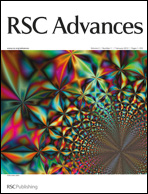A series of N,1-diphenyl-4,5-dihydro-1H-[1]benzothiepino[5,4-c]pyrazole-3-carboxamides (11a–m) and N,1-diphenyl-4,5-dihydro-1H-[1]benzothiepino[5,4-c]pyrazole-3-carboxamide-6,6-dioxides (12a–m) were synthesized by varying the active part (carboxamide group) of the pyrazole and were characterized by IR, 1H-NMR, 13C-NMR, mass spectral data, and elemental analyses. All compounds were evaluated for their antibacterial and antifungal activity. Compounds 11k and 12k showed higher activity than chloroamphenicol against Klebsiella pneumonia and Escherichia coli. Compounds 11b, 11c, 11l, 12b, 12c, and 12l displayed higher activity towards amikacin in inhibiting the growth of Escherichia coli (MIC 3.125 mg mL−1). Compounds 11k and 12k were equipotent to clotrimazole in inhibiting the growth of Candida albicans (MIC 3.125 mg mL−1). All compounds were screened for their cytotoxic activity against two tumor cell lines, namely the human colon tumor cell line (HCT116) and human cervical cancer cell line (HeLa). Most of the test compounds exhibited potent antitumor activity, especially compounds 11k and 12k, which displayed the highest activity among the test compounds with an IC50 equal to 18 and 12 μM for HeLa cells, and 16 and 10 μM for HCT116 cells, respectively. All the synthesized compounds showed low to moderate inhibitory activities against M. tuberculosis (MTB) H37Rv, whereas 11k and 12k were found to be more active against M. tuberculosis, with MIC values of 8.2 and 7.8 μM, compared to other analogues.
![Graphical abstract: Analogues of N,1-diphenyl-4,5-dihydro-1H-[1]benzothiepino[5,4-c]pyrazole-3-carboxamide and N,1-diphenyl-4,5-dihydro-1H-[1]benzothiepino[5,4-c]pyrazole-3-carboxamide-6,6-dioxide: syntheses, characterization, antimicrobial, antituberculosis, and antitumor activity](/en/Image/Get?imageInfo.ImageType=GA&imageInfo.ImageIdentifier.ManuscriptID=C3RA23124K&imageInfo.ImageIdentifier.Year=2013)

 Please wait while we load your content...
Please wait while we load your content...